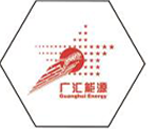
Nov . 06, 2024 16:00
Back to list
Understanding the Functionality and Applications of Pressure Reducing Regulators in Various Systems
The Importance of Pressure Reducing Regulators in Industrial Applications
Pressure reducing regulators (PRRs) are essential devices that play a critical role in the regulation of gases and liquids across various industrial applications. These devices are specifically designed to maintain a constant output pressure regardless of fluctuations in the inlet pressure, ensuring stable and safe operation of equipment. In industries ranging from petrochemicals to pharmaceuticals, the reliable performance of PRRs is fundamental to achieving optimal efficiency and safety.
At its core, a pressure reducing regulator functions by converting high input pressure to a lower, more manageable output pressure. This reduction is achieved through a delicate mechanism that balances the force of a spring with the pressure of the gas or liquid. When the inlet pressure exceeds the setpoint, the diaphragm within the regulator acts to close off the flow, while any drop in pressure allows the flow to resume. This dynamic equilibrium allows PRRs to respond promptly to variations in the system, maintaining pressure within specified limits.
One of the primary reasons for employing pressure reducing regulators is to protect sensitive equipment downstream. Many industrial processes involve the use of components that are sensitive to excessive pressure, such as valves, gauges, and instrumentation. For instance, in gas distribution systems, maintaining the correct outlet pressure is crucial to prevent damage to pipes and fittings, which could lead to leaks or catastrophic failures. By using PRRs, companies can extend the lifespan of their equipment and reduce maintenance costs, contributing to overall operational efficiency.
pressure reducing regulators

In addition to equipment protection, pressure reducing regulators are essential for ensuring process accuracy. In many applications, such as laboratory gas systems, the precise control of pressure is vital to achieving repeatable and reliable results. Variability in pressure can lead to fluctuations in process performance, negatively affecting product quality. With PRRs, industries can achieve stable pressure levels, thus enhancing the accuracy of their processes and ensuring consistent product output.
Moreover, safety is an inherent advantage of pressure reducing regulators. Many gases and liquids used in industrial settings are hazardous, and the potential for accidents increases with higher pressures. PRRs help mitigate these risks by allowing for the safe handling and use of pressurized materials. In case of a pressure surge, the regulator can automatically reduce the pressure to safe levels, preventing potential disasters. This feature is particularly important in the chemical manufacturing sector, where the proper handling of volatile substances is critical to worker safety and environmental protection.
The versatility of PRRs extends across numerous applications and industries. For instance, they are employed in the food and beverage industry to regulate gases used in fermentation and carbonation processes, ensuring quality and consistency in production. In the energy sector, PRRs are utilized to control the distribution of natural gas to homes and businesses, providing a steady and safe supply of energy. Additionally, they are instrumental in HVAC systems, where maintaining optimal pressure levels is crucial for efficient climate control and air distribution.
In conclusion, pressure reducing regulators are integral components in a wide array of industrial applications, offering stability, safety, and accuracy in pressure management. Their ability to adapt to fluctuating pressures makes them invaluable for protecting sensitive equipment, ensuring process reliability, and enhancing safety in potentially hazardous environments. As industries increasingly demand more efficient and safe operations, the role of pressure reducing regulators will continue to grow, solidifying their importance in modern industrial practices. Understanding and utilizing these regulators effectively can lead to significant improvements in operational excellence across various sectors.
Latest news
-
Safety Valve Spring-Loaded Design Overpressure ProtectionNewsJul.25,2025
-
Precision Voltage Regulator AC5 Accuracy Grade PerformanceNewsJul.25,2025
-
Natural Gas Pressure Regulating Skid Industrial Pipeline ApplicationsNewsJul.25,2025
-
Natural Gas Filter Stainless Steel Mesh Element DesignNewsJul.25,2025
-
Gas Pressure Regulator Valve Direct-Acting Spring-Loaded DesignNewsJul.25,2025
-
Decompression Equipment Multi-Stage Heat Exchange System DesignNewsJul.25,2025

